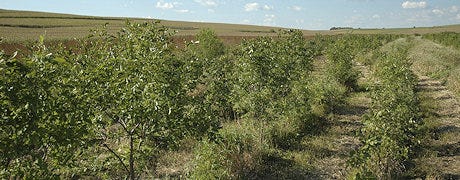July 11, 2013

FAQ: I missed the general CRP sign up for 2013 which was held for a month and ended June 14. Now I'm considering signing up to enroll some of my worst erosion prone land in the continuous CRP, which you can sign up for all year long. Please explain what land is eligible for the continuous CRP?

CRP OFFERS TWO CHOICES: USDA has a sign-up period for the general Conservation Reserve Program usually once a year. The 2013 general CRP sign-up was May 20 to June 14. But landowners and producers can enroll land in the continuous CRP sign-up any time of year. The continuous CRP requires a different set of conservation practices, however.
Answer: USDA conducted a four-week Conservation Reserve Program general sign-up period beginning May 20 and ending on June 14. U.S. Secretary of Agriculture Tom Vilsack also announced the restart of sign-up for the continuous CRP, including the Conservation Reserve Enhancement Program, State Acres for Wildlife Enhancement Initiative, the Highly Erodible Land Initiative, the Grassland Restoration Initiative, the Pollinator Habitat Initiative and other related initiatives. Sign-up for continuous CRP began on May 13 and will continue through September 30, 2013.
"As always, we expect strong competition to enroll acres into CRP, and we urge interested producers to maximize their environmental benefits and to make cost-effective offers," said Vilsack. "CRP is an important program for protecting environmentally sensitive lands from erosion and sedimentation, and for ensuring the sustainability of our groundwater, lakes, rivers, ponds and streams. Through the voluntary participation of farmers and ranchers, CRP helps protect our natural resources, preserve wildlife habitat and bring good paying jobs to rural America related to hunting, fishing and outdoor recreation."
If you missed the general sign-up, consider the continuous CRP
Vilsack encourages producers to look into CRP's other enrollment opportunities offered on a continuous, noncompetitive, sign-up basis.
CRP has a 27-year legacy of successfully protecting the nation's natural resources through voluntary participation, while provides significant economic and environmental benefits to rural communities across the U.S. Producers enrolled in CRP plant long-term, resource-conserving covers to improve the quality of water, control soil erosion and develop wildlife habitat. In return, USDA provides participants with rental payments and cost-share assistance. Contract duration is between 10 and 15 years.
Currently, 27 million acres are enrolled in CRP through 700,000 contracts on 390,000 farms throughout the U.S., with enrollment in 49 states and Puerto Rico. Contracts on an estimated 3.3 million acres will expire on Sept. 30, 2013. Enrollment authority for all types of CRP, which had expired Sept. 30, 2012, was extended through 2013 by the American Taxpayer Relief Act of 2012.
Offers for general sign-up CRP contracts are ranked using an Environmental Benefits Index
Offers for general sign-up CRP contracts are ranked according to an Environmental Benefits Index, or EBI. USDA's Farm Service Agency collects data for each of the EBI factors based on the relative environmental benefits for the land offered. FSA uses the following factors to assess the environmental benefits for the land offered:
* Wildlife habitat benefits resulting from covers on contract acreage
* Water quality benefits from reduced erosion, runoff and leaching
* On-farm benefits from reduced erosion
* Benefits that will likely endure beyond the contract period
* Air quality benefits from reduced wind erosion and cost.
CRP soil rental rates for non-irrigated cropland were updated this year to better reflect location and market conditions. A nationwide cap was placed on the maximum amount that may be paid per acre for the general sign-up. Taken together these steps help ensure that taxpayer dollars are spent in a fiscally responsible manner while producing the maximum environmental benefits for each dollar spent.
CRP is the largest USDA conservation program and continues to make major contributions to national efforts to improve water and air quality, prevent soil erosion, and protect the most sensitive areas including those prone to flash flooding and runoff. At the same time, CRP has helped increase populations of pheasants, quail and ducks and is recognized as benefiting certain rare species like the sage grouse, the lesser prairie chicken and other grassland birds. Highlights of CRP accomplishments include:
* The restoration of more than 2 million acres of wetlands and 2 million acres of riparian buffers.
* Prevention of more than 600 million pounds of nitrogen and more than 100 million pounds of phosphorous from flowing into our nation's streams, rivers and lakes.
* Providing $1.8 billion annually to landowners -- dollars that make their way into local economies, supporting small businesses and creating jobs.
* Sequestering more carbon than any other conservation program in the country. By placing vulnerable cropland into conservation, CRP sequesters carbon in plants and soil and reduces both fuel and fertilizer usage. In 2011, CRP resulted in carbon sequestration equal to taking almost 10 million cars off the road.
For more information on CRP and other FSA programs, visit a local FSA service center or www.fsa.usda.gov./
You May Also Like




